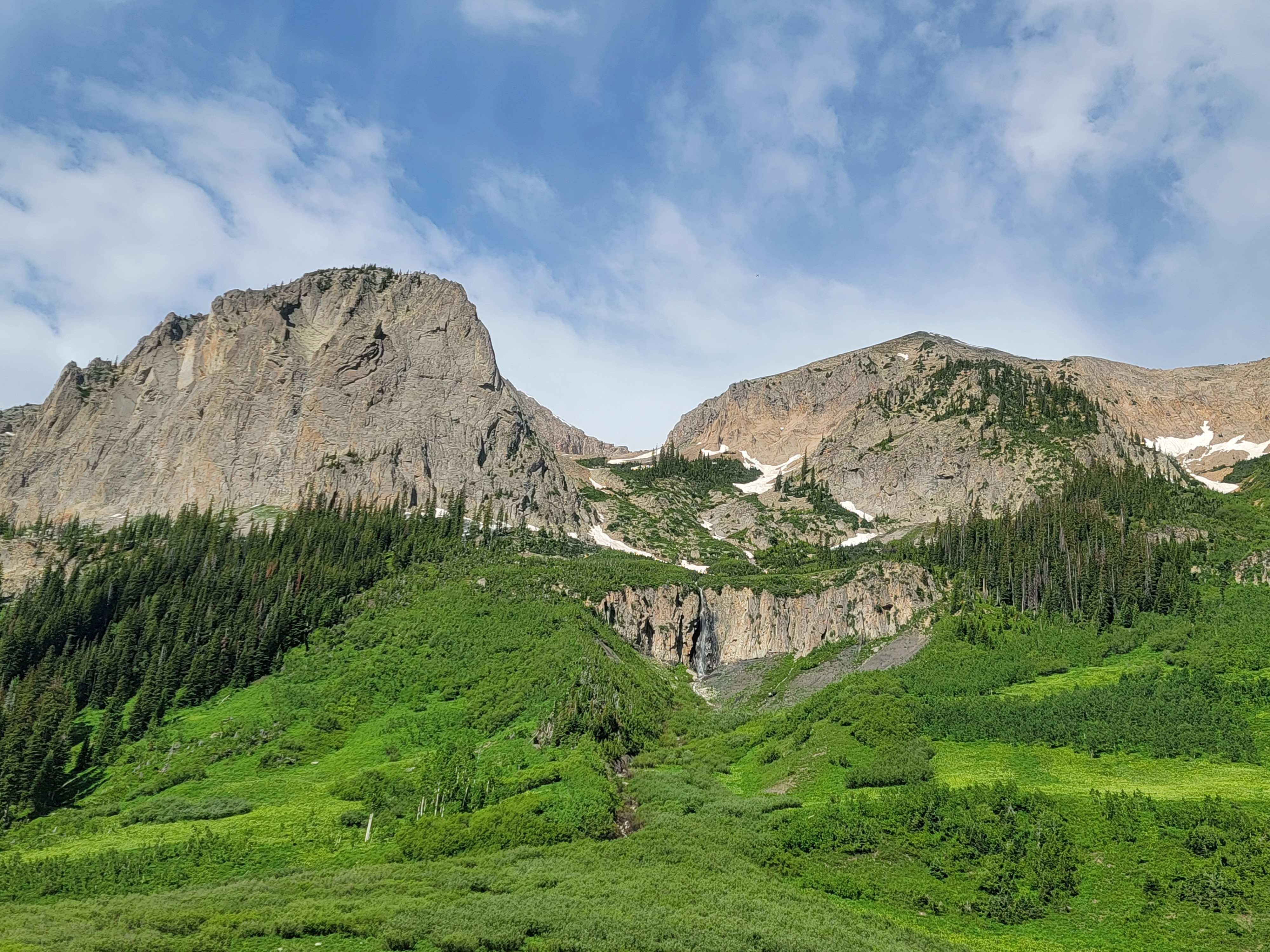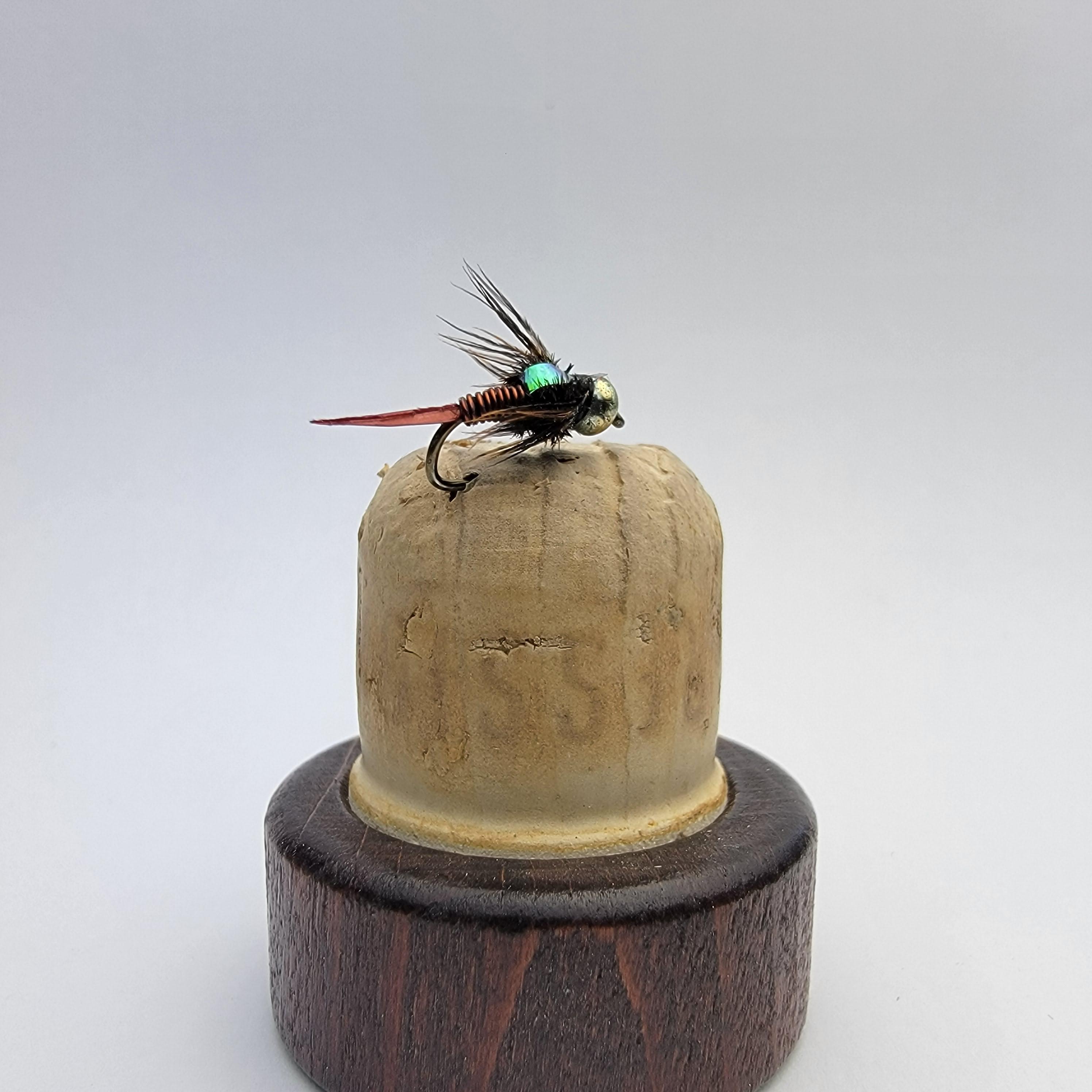Fly fishing in Colorado offers anglers many opportunities to test their skills on some of the country's most scenic and diverse waters. Colorado's waterways are home to a wide variety of trout species and other game fish, from high alpine lakes and streams to meandering rivers and reservoirs, from high alpine lakes and streams to meandering rivers and reservoirs. To make the most of your fly fishing adventures in Colorado, having a good selection of fly patterns in your arsenal is essential. Here, we'll explore the top 20 fly patterns that have proven effective for targeting trout in the diverse waters of Colorado.
Top Colorado Fly Choices

These fly patterns have been chosen for Colorado based on our extensive experience fishing its waters for over 30 years. We have found these patterns to be effective in imitating the various insects and food sources that trout commonly feed on in Colorado's rivers and lakes.
The Parachute Adams is a versatile dry fly that imitates many mayflies, and its visibility on the water makes it highly effective. The Elk Hair Caddis is another popular dry fly pattern that imitates caddisflies and can also imitate stoneflies and moths. The Woolly Bugger is a versatile streamer pattern that can imitate leeches, baitfish, and crayfish, making it suitable for various water types.
The Hare's Ear and Pheasant Tail Nymph are classic nymph patterns that imitate mayflies, caddisflies, and stoneflies. The Copper John and Prince Nymph are heavily weighted nymph patterns that imitate nymphs and emergers. The Zebra Midge is a simple but effective pattern that imitates midges prevalent in Colorado waters. The Griffith's Gnat is a small dry fly pattern that imitates tiny midges or other small insects. The RS2 is a versatile emerger pattern that imitates small mayflies and midges. The Muddler Minnow is a popular streamer pattern that imitates baitfish or sculpins. The Stimulator is a versatile dry fly pattern that can imitate stoneflies, caddisflies, and large mayflies. The San Juan Worm is a simple but effective pattern that imitates aquatic worms, a common food source for trout.
The Beadhead Pheasant Tail Nymph and Beadhead Prince Nymph are variations of popular nymph patterns with added weight and visibility from the beadhead. Emerger patterns, such as the RS2, Barr's Emerger, and WD-40, imitate insects transitioning from nymph to adult stages. Soft Hackle flies imitate emerging or drowned insects, providing lifelike movement in the water. The Royal Wulff is an attractive dry fly pattern that imitates mayflies and caddisflies. The Adams is a versatile dry fly pattern that imitates various mayflies. Trico Spinners imitate the hatching stages of Trico mayflies, which are small and abundant in many Colorado rivers.
These fly patterns have consistently yielded successful results for us in Colorado's diverse fishing waters, and we believe they will continue to be effective for both experienced and novice anglers.
1. Parachute Adams
The Parachute Adams is a versatile dry fly pattern that imitates many mayflies. It is available in sizes 12 to 24, with smaller sizes suitable for imitating midges. The white parachute post and dark body make it highly visible on the water and effective in various water conditions.
2. Elk Hair Caddis
The Elk Hair Caddis is another popular dry fly pattern. It imitates adult caddisflies, but the larger sizes can also imitate stoneflies and moths. Sizes 14 to 18 are commonly used, and the fly can be dead-drifted or "skated" on the water's surface to imitate a struggling insect.
3. Woolly Bugger

The Woolly Bugger is a versatile and effective streamer pattern. It can imitate various aquatic creatures like leeches, baitfish, and crayfish, making it suitable for still water and moving water fishing. Sizes 6 to 12 are commonly used, and it's recommended to have different color variations in your fly box.
4. Hare's Ear
The Hare's Ear is a classic nymph pattern that imitates various aquatic insects, such as mayflies, caddisflies, and stoneflies. Sizes 12 to 18 are commonly used, and the fly's body material made of hare's ear dubbing gives it a lifelike appearance.
5. Pheasant Tail Nymph

The Pheasant Tail Nymph is another popular nymph pattern that imitates mayflies and stoneflies. Sizes 12 to 20 are commonly used, and the fly's body is made of pheasant tail fibers, which give it a natural look in the water.
6 . Copper John
The Copper John is a heavily weighted nymph pattern that imitates various nymphs and emergers. Sizes 14 to 18 are commonly used, and the fly's copper-colored body and flashy wing casing make it highly visible underwater.
7. Prince Nymph
The Prince Nymph is a successful attractor nymph pattern that imitates various insect larvae. It works well in different water conditions and attracts trout. Sizes 12 to 18 are commonly used, and the fly's body is made of peacock herl and goose biots.
8. Zebra Midge
The Zebra Midge is a simple but effective pattern that imitates midges, which are prevalent in Colorado waters, especially in colder months. Sizes 16 to 22 are commonly used, and the fly's minimal design and slender profile can fool picky trout.
9. Griffith's Gnat

Griffith's Gnat is a small dry fly pattern that imitates clusters of tiny midges or other small insects. Sizes 16 to 20 are commonly used, and the fly's body is made of peacock herl and wrapped with hackle.
10. RS2
The RS2 is a versatile emerger pattern that imitates small mayflies and midges. Sizes 18 to 22 are commonly used, and the fly can be fished in still and moving water. Its simple design and neutral colors make it effective in various situations.
11. Muddler Minnow
The Muddler Minnow is a popular streamer pattern that imitates baitfish or sculpins. Sizes 4 to 8 are commonly used, and the fly's spun deer hair head creates a realistic profile, while the body materials add movement to entice predatory trout.
12. Stimulator

The Stimulator is a versatile dry fly pattern that can imitate various stoneflies, caddisflies, and large mayflies. Sizes 12 to 18 are commonly used, and the fly's buoyant hair wing and flashy body make it easy to see on the water.
13. San Juan Worm

The San Juan Worm is a simple but effective pattern that imitates aquatic worms, a common food source for trout. Sizes 10 to 14 are commonly used, and the fly's bright colors can attract fish in various water conditions.
14. Beadhead Pheasant Tail Nymph
The Beadhead Pheasant Tail Nymph is a variation of the regular Pheasant Tail Nymph with added weight from the beadhead, allowing for deeper fishing. Sizes 12 to 20 are commonly used, and the beadhead adds weight and visibility to the fly.
15. Beadhead Prince Nymph
.jpg?width=300&height=225&name=20240222_071200%20(1).jpg)
The Beadhead Prince Nymph is a variation of the Prince Nymph with a beadhead for added weight and visibility. Sizes 12 to 18 are commonly used, and the fly's attractor properties make it effective in various water conditions.
16. Emerger
The term "emerger" encompasses various patterns that imitate insects transitioning from nymph to adult stages. RS2, Barr's Emerger, and WD-40 are examples of popular emerger patterns. The sizes of emerger patterns can vary depending on the target species and the specific insect hatch being imitated.
17. Soft Hackle
Soft Hackle flies are often tied with hackle feathers that provide lifelike movement in the water. They can imitate emerging insects or drowned insects. The sizes of Soft Hackle flies may vary based on the target species and insect hatch.
18. Royal Wulff

The Royal Wulff is an attractive dry fly pattern that imitates a variety of mayflies and caddisflies. Sizes 12 to 16 are commonly used, and the fly's hair wing and bright colors make it highly visible on the water.
19. Adams
The Adams is a versatile dry fly pattern that imitates various mayflies. Sizes 12 to 22 are commonly used, and due to its profile and coloration, the fly works well in slower and faster water.
20. Trico Spinner
Trico Spinners imitate the hatching stages of Trico mayflies, which are small and abundant in many Colorado rivers. Sizes 18 to 24 are commonly used, and the fly's slender profile and dark color can work well during Trico hatches.
RIVER WHISPER | SPOT FINDER | NEW
Tired of outdated fishing reports? As a modern fly fisherman, you need fresh insights that actually help you reel in more fish. River Whisper brings you honest, up-to-date fly fishing reports for Colorado—no gimmicks, just the real deal. Elevate your fishing game with us—because your success on the river matters!
.png?width=300&height=100&name=Copy%20of%20Rise%20Beyond%20Logo%2012.31.24%20(300%20x%20100%20px).png)
.png)







.jpg?width=300&height=225&name=20240222_071300%20(1).jpg)

.png)
